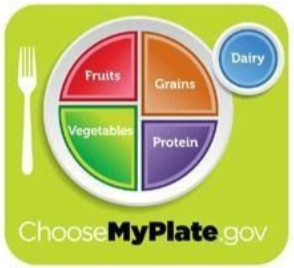Take our quiz to determine how much you know about nutrition and healthy eating habits.
If you said “false” to all of these statements, then you aced the quiz!
1) “95% fat-free” means that 5% of the total weight of the product is from fat. For instance, an advertisement says that a common processed meat product is 95% fat-free. The label says that each slice of meat contains 100 calories and 6 grams of fat. Each gram of fat contains 9 calories, so 54 of the 100 calories are from fat or, 54% of the calories are from fat.
2) The body actually converts carbohydrates into energy, so eliminating carbohydrate consumption can make you sluggish. Additionally, eating carbohydrates in moderation does not directly cause weight gain.
3) Just because it’s from Whole Foods doesn’t mean that it’s healthy. Certain terms like “all-natural’ have absolutely no legal meaning. Food producers can put this label on just about anything.
4) It is a commonly held belief that honey is a healthy alternative to sugar, but they are almost chemically indistinguishable. They contain close to equal amounts of fructose and glucose and the body cannot distinguish between the two. Raw honey is better than pasteurized honey and refined sugar. Studies have shown that raw honey enhances your body’s ability to process glucose and alleviates allergies. Of course, removing sweeteners from your diet is optimal but of all the sweeteners available, raw honey is the healthiest choice.
The U.S. Department of Agriculture’s Recommended Daily Allowance of protein is 0.8 grams per kilogram of body weight for adults older than 19 years. The RDA is the amount of a nutrient you need to meet your basic nutritional requirements. In a sense, it’s the minimum amount you need to keep from getting sick — not the specific amount you are supposed to eat every day. (Harvard Health) To determine your daily protein intake, use this Protein Calculator.

Michelle Obama helped to create new governmental guidelines for food intake as an alternative to the outdated food pyramid. My Plate is based on the nutrition advice from the Dietary Guidelines for Americans. Fruits and vegetables make up half of the plate, so folks should aim to get half of their food from these sources. Protein and grains make up the other half, with a small daily allowance of dairy (if applicable to an individual’s situation). (Time)